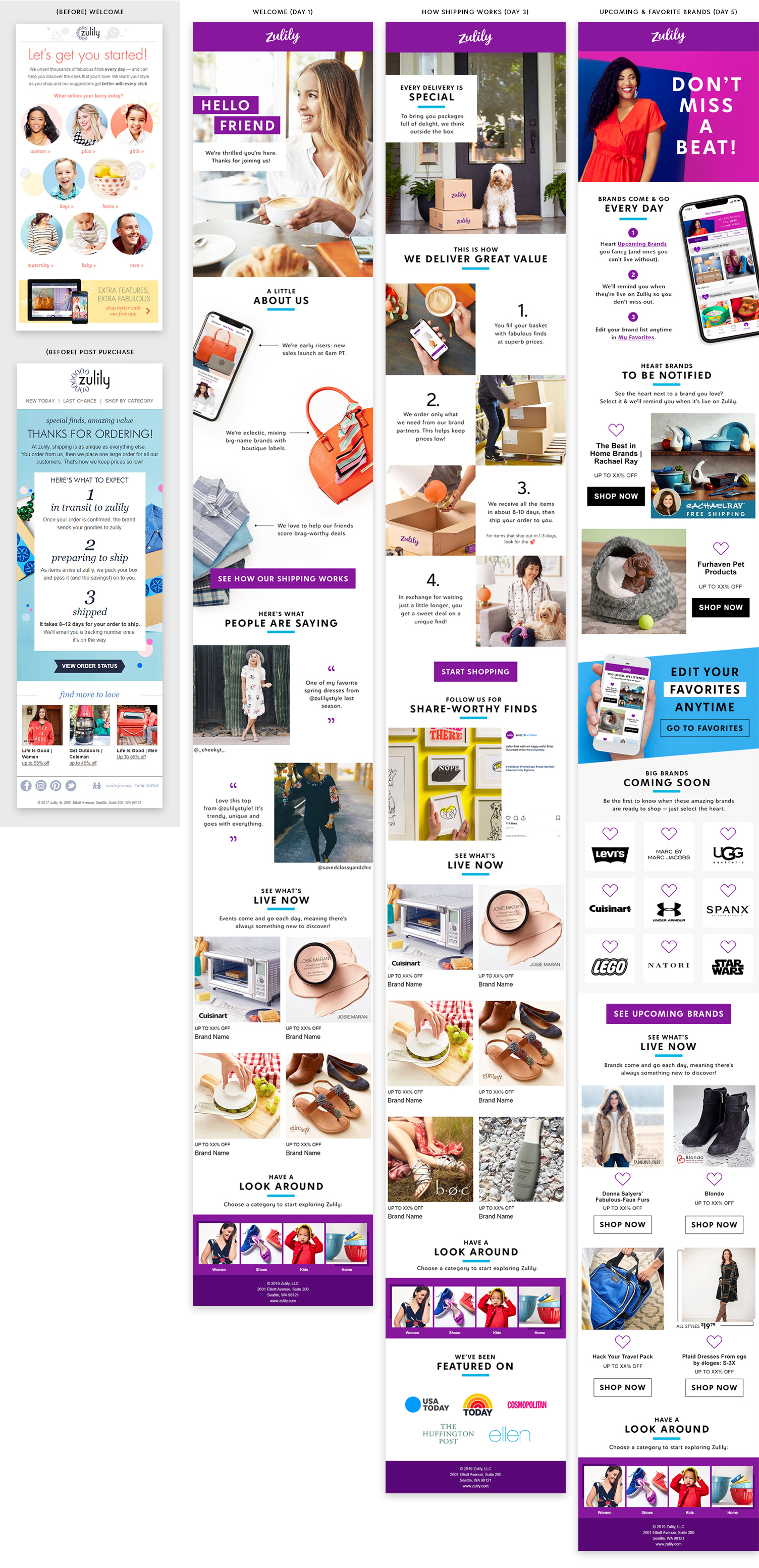
Zulily Email Onboarding Series
Role: Creative Direction & Strategy
Zulily’s business model is different from traditional retailers because thousands of products launch everyday and are available for only three days at a time. Most of Zulily’s product is purchased from the vendor after the three-day sales event, and the product is shipped to Zulily’s warehouse, then on to the customer. This means in a world where 2-day shipping is the new standard for many retailers, the Zulily order-to-delivery process takes much longer.
The previous new member email didn’t explain the Zulily business model or set expectations about the shipping process. When new members made their first purchase, they were often frustrated at the length of time it took to receive their item which negatively impacted NPS scores and repurchase rates.
The new series of onboarding emails educate new members on the value of Zulily, how shipping works, upcoming brand launches, and finding inspiration on social channels. The creative team approached the messaging and design through a lens of “show not tell” to explain Zulily’s fun and unique shopping experience. To create an emotional connection, and build long-term, high value customers, the messaging was written as if Zulily were talking to a trusted friend, providing tips and inspiration.
Instead of overwhelming a new member with too much information on their first day of sign up, the content is divided into a series of easy-to-consume emails they receive every couple of days. Because Zulily isn’t a household name yet, it was important to include social proof in the form of customer testimonials so that new members would feel confident about making a first purchase.
Many versions were tested and continue to be incrementally updated for content, length, messaging, Gmail inbox placement, and performance. Most Zulily email performance is based on how much same-day demand it drives, but the team and I made the case that this type of email should be based on different KPI’s such as long-term NPS scores, activation rates, revisit/repurchase rates, and YOY decreased churn rates.
